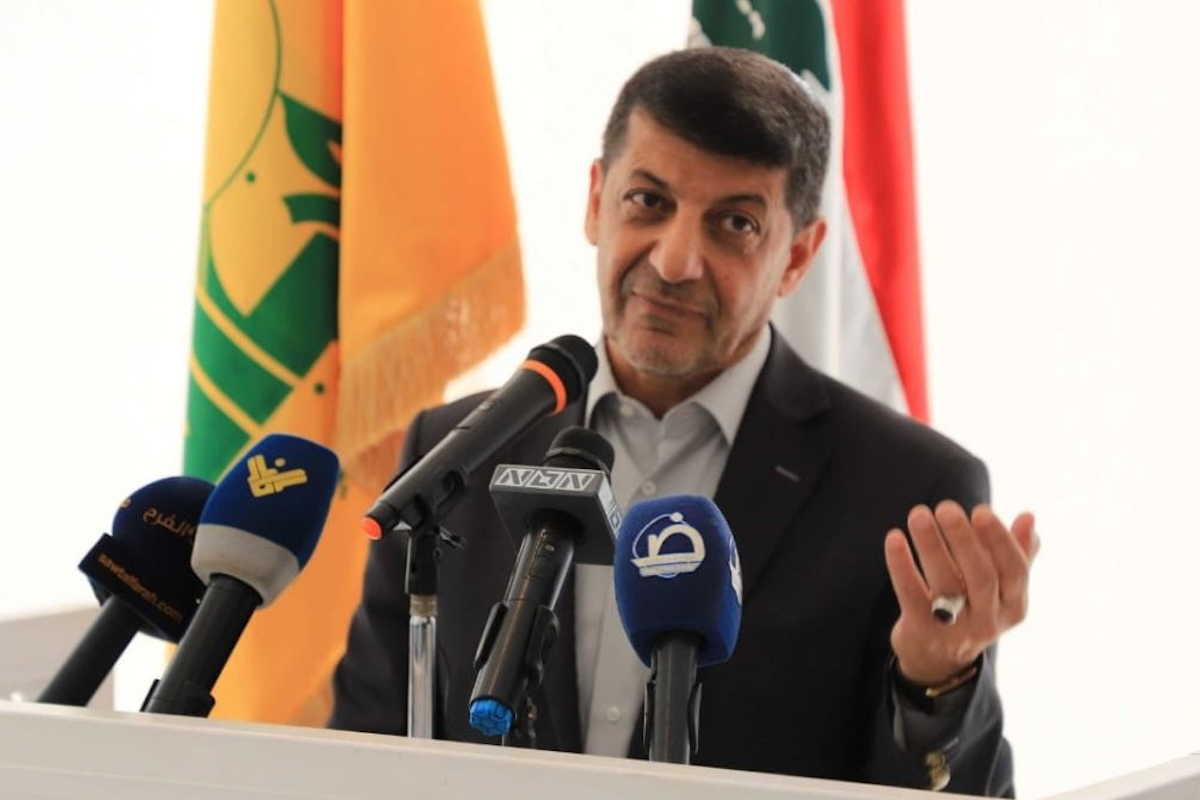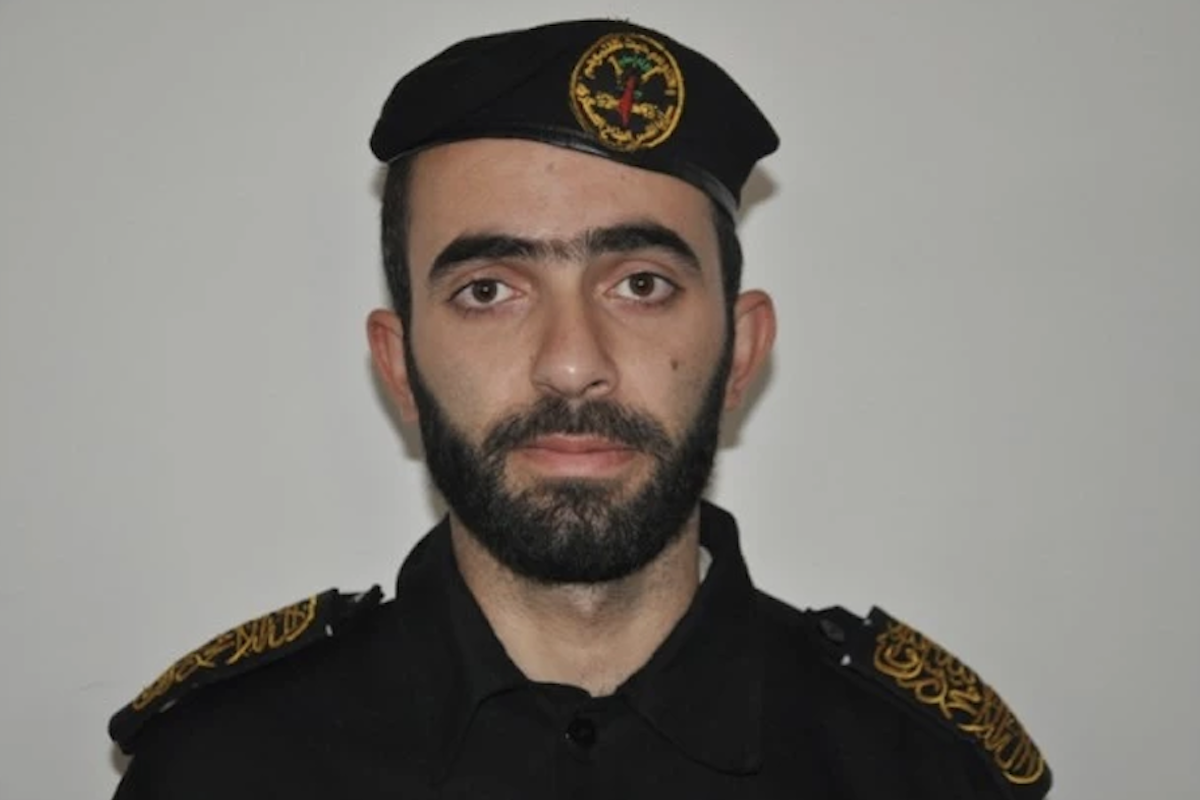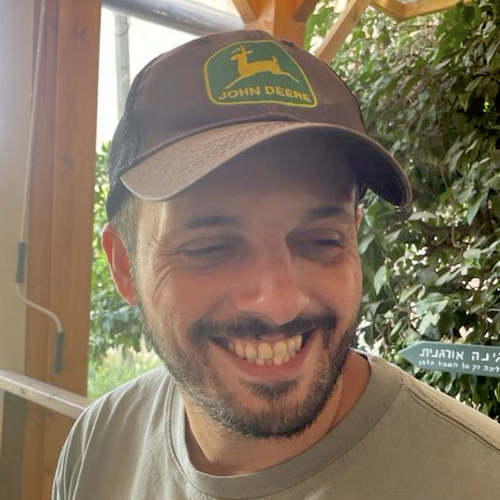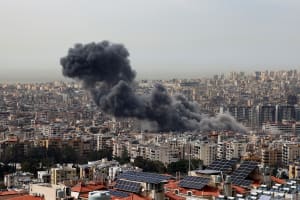Stop the presses: The weaponization of media credentials
The international community's reluctance to acknowledge this reality has serious consequences

The transformation of journalism into an operational asset for terrorist organizations represents one of the most sophisticated developments in modern asymmetrical warfare.
From Gaza's crowded streets to Lebanon's broadcasting centers, terrorist groups have systematically infiltrated and exploited legitimate media operations, creating a complex web where the line between journalist and terrorist has become deliberately blurred.
In the wake of the Hamas massacre of Israelis on Oct. 7, the international media community faces a stark choice: continue the dangerous charade of treating terrorist propagandists as journalists, or finally acknowledge the reality that a press card in the hands of a Hamas or Hezbollah operative is simply another weapon in their arsenal.
This isn't about semantic preferences or political correctness. When media organizations insist on calling Hamas terrorists "militants" or "fighters," or when they describe Hezbollah's propaganda outlets as "news stations," they become unwitting accomplices in a sophisticated deception.
The evidence is clear: these are not journalists who sympathize with terrorism – they are terrorists who have weaponized journalism.
Al-Manar: Creating the blueprint
Hezbollah's Al-Manar television network stands as the most sophisticated example of how terrorist organizations can weaponize media infrastructure. Founded in 1991, with its first broadcast being Ayatollah Khomeini's funeral, the network has evolved into a $15 million annual operation that seamlessly blends journalism, propaganda, and terrorism.
The network's sophistication becomes evident in its organizational structure. While officially denying direct control by Hezbollah, Al-Manar's operations are directed by the Media Relations Unit, headed by Hajj Mohammad Afif, who simultaneously served as Hassan Nasrallah's media advisor (until Nasrallah’s death). This dual role exemplifies how the terror media, to speak bluntly, maintains a façade of independence while operating as an integrated part of terrorist infrastructure.
Al-Manar's terror-media integration manifests in clever ways. During the 1990s, camera crews began accompanying Hezbollah terrorists on operations, not merely for propaganda but to provide tactical assessment of attack effectiveness. These recordings served a multifaceted purpose: they provided military intelligence, created propaganda material, and offered training resources for future operations.

The Gaza media complex
Recent Israeli military intelligence operations have exposed an extensive network of terrorist journalists operating within mainstream media organizations, most notably within Al Jazeera. In October 2024, evidence emerged of six Al Jazeera journalists serving as active members of Hamas and Islamic Jihad, revealing a systematic infiltration of legitimate media operations.
The case of Ismael Abu Omar exemplifies this dual-role strategy. After being wounded in an Israeli strike, Al Jazeera presented him as a journalist casualty. However, military documents later revealed his active role in terror operations while maintaining his media cover.
Ismail Abu Omar holds two roles. According to @AlJazeera , he’s a journalist. According to common sense, he’s a terrorist.
— Israel Defense Forces (@IDF) February 14, 2024
How do we know this? Abu Omar is a deputy company commander in Hamas’ Eastern Battalion of Khan Yunis who filmed himself in Kibbutz Nir Oz during the… pic.twitter.com/eHYR14o0RI
The pattern extends beyond Al Jazeera. Mohammed Abu Aisha's case at Al-Quds Radio demonstrated the brazen nature of this infiltration. While working as a radio host, Abu Aisha appeared on Islamic Jihad's official website in military uniform, demonstrating how terrorists openly move between media and offensive roles while maintaining their journalistic credentials.
Al-Aqsa TV represents perhaps the most transparent example of this phenomenon. The network's head, Mohammad Thouraya, while denying direct Hamas control, openly acknowledged that his employees were "all part of the resistance." This admission revealed how some media outlets function as direct extensions of terror organizations while maintaining the pretense of legitimate journalism.
Operational integration
The infiltration of terror into the media extends far beyond propaganda. During the South Lebanon conflict, Al-Manar developed sophisticated methods of integrating media operations with terror activities. The network established a special information unit focused on highlighting South Lebanon Army soldiers (a Christian army force that opposed Hezbollah) returning to their families, while simultaneously broadcasting detailed threats against those who remained on the battlefield.
This psychological warfare campaign was coordinated with military operations, demonstrating how media platforms serve as operational assets.
In Gaza, terrorist groups have refined these tactics further. Press credentials provide access to sensitive locations, allowing operatives to gather intelligence under journalistic cover.
Media vehicles transport personnel and equipment, while news organizations provide cover for communications and coordination. During the October 7 attacks, some terrorists wore press vests, exploiting the protections afforded to journalists to carry out their operations.
The sophistication of these operations becomes evident in their use of multiple media platforms. Social media accounts affiliated with these organizations engage in coordinated campaigns, while traditional broadcast media provides operational support through coded messages and strategic information dissemination.
During conflicts, these networks coordinate their coverage to maximize psychological impact and provide operational intelligence.
Israeli response to media terrorism
Israel's response to terrorist exploitation of the media has entered a new phase of decisive action. In October 2024, the Israeli military launched a comprehensive campaign targeting the intersection of terrorism and media operations in both Lebanon and Gaza.
In Lebanon, Israel conducted precise strikes against terrorist-affiliated media networks, demonstrating its refusal to allow journalistic credentials to shield terrorist operations. A significant strike in the Hasbaya region targeted Al-Manar, Hezbollah's television network, while Al Mayadeen's offices in Beirut were hit after being identified as civilian facilities repurposed for Hezbollah's weapon production and storage.
The operation extends beyond media infrastructure to target the broader terrorist support network. Israeli forces struck the Al-Qard Al-Hassan Association (AQAH), a financial institution managing Hezbollah's finances, hitting 14 locations within Beirut. These coordinated strikes represent Israel's holistic approach to dismantling terrorist infrastructure, whether it masquerades as media, financial services, or other civilian operations.
This campaign reflects Israel's recognition that terrorist organizations have created sophisticated networks of seemingly civilian institutions that serve their military objectives.
The same month that Israeli forces were targeting Hezbollah's media infrastructure in Lebanon, military intelligence exposed six Al Jazeera reporters in Gaza as operatives of Hamas and Palestinian Islamic Jihad, demonstrating how terrorist organizations systematically embed their personnel within international media organizations.

The pattern of deception
The evidence reveals a clear pattern:
When Mohammed Abu Aisha appeared in Islamic Jihad uniform while maintaining his role as a radio host, he demonstrated the terrorist strategy of exploiting media credentials. At Al-Aqsa TV, the truth was even more blatant – its employees weren't just sympathetic to Hamas, they were active Hamas terrorists operating under media cover.

This systematic deception extends beyond individual cases. Al-Manar's entire operation demonstrates how terrorist organizations can build sophisticated media enterprises that serve as operational assets while maintaining the fiction of legitimate journalism. Their programming doesn't just promote terrorism – it actively facilitates it through coded messages, operational coordination, and real-time intelligence gathering.
The cost of semantic games
The international community's reluctance to acknowledge this reality has serious consequences. When media organizations insist on calling Hamas "militants" instead of terrorists, when they describe Hezbollah's propaganda operations as "media outlets," they become unwitting accomplices in a sophisticated deception.
Consider the implications:
– A Hamas terrorist with a press card gains access to sensitive locations
– A Hezbollah operative using media cover gathers intelligence
– Terrorist propaganda gets legitimized as "news coverage"
– Attack planning happens under the protection of press freedom
Technology and terror
Modern technology has made this problem even more acute. Social media platforms and live-streaming capabilities allow terrorist organizations to broadcast their propaganda in real-time while maintaining the fiction of legitimate journalism. When Al-Manar was banned from satellite transmission, they simply moved online, demonstrating how terrorists adapt to continue their operations under media cover.
The way forward
Addressing this threat requires abandoning the comfortable fictions that have allowed it to flourish. A terrorist with a press card is still a terrorist. A propaganda operation run by a terrorist organization is still a terrorist operation, regardless of how professionally it produces its content.
The task ahead requires:
1. Acknowledging that terrorist organizations have weaponized journalism
2. Developing better systems for identifying legitimate journalists
3. Creating legal frameworks that recognize this new reality
4. Protecting genuine journalism while exposing terrorist exploitation
5. Calling things by their real names – terrorist operations masquerading as media must be identified as such
The weaponization of journalism by terrorist organizations represents one of the most sophisticated developments in modern asymmetric warfare. But the first step in confronting this threat is calling it what it is - terrorism in journalist's clothing. Until the international community finds the courage to acknowledge this reality, terrorist organizations will continue to exploit our reluctance to call things by their real names. If it walks, talks, and shoots like a terrorist – it's not a duck or a journalist.

Tolik is a Middle East analyst and media professional with extensive experience in covering regional geopolitical developments. His background spans analytical journalism, media production, and strategic communications, having contributed to major Israeli and international television networks and newspapers.













